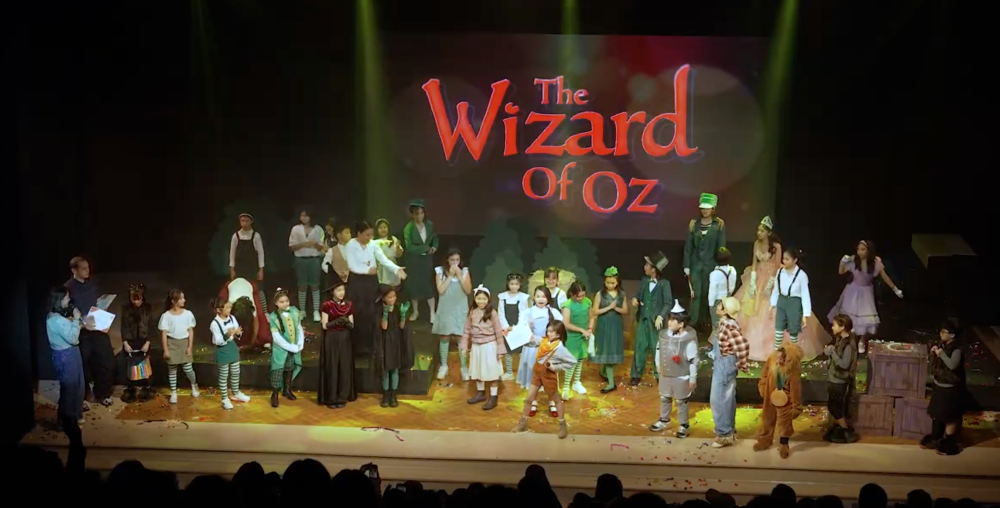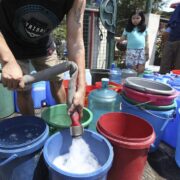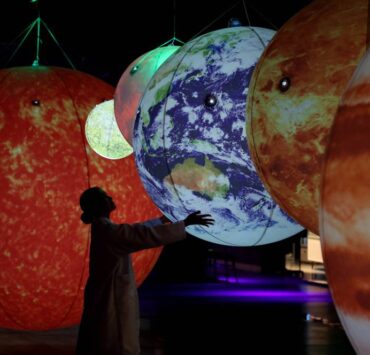Children’s theater: Permission for kids (and nonkids) ‘to believe again’

It’s no West End or Broadway production. It’s nowhere close to the stellar stagings played to packed audiences at popular resort hotels.
No elaborate, jaw-dropping set pieces. No chandelier hurtling overhead before dramatically plunging onto the stage, or a helicopter landing on an embassy complex crawling with desperate refugees.
Instead, there’s often just a white sheet of cloth as backdrop—but it’s more than enough.
Organic magic
For in the unfolding action onstage, the magic still unfurls, the barest of sets and props spark vivid imaginings, and fumbled lines or wardrobe mishaps spark tender laughter and joy among parents watching from the back rows.
Welcome to children’s theater, where the magic can be more organic, not the professionally manufactured, overdone kind, where the thrill comes not only from having kids in the cast—but in the genuine connections made with the (sometimes nervous) adults in the gallery.
Still, for the showrunners, thespians, and other creatives behind the curtain, this is all serious show business.
“A certain demographic will instantly think of the big touring shows … when you say ‘theater.’ But really, there are so many great pieces made by amateurs or those with smaller budgets that bear the same value and truth, just in different packaging,” said Mica Fajardo, a theater actress whose dream is for these “great pieces” to be accepted more by a mainstream audience.
In some of these smaller productions, a white sheet of cloth will do to set the canvas for the scene, with cutout figures backlit to give the impression of characters flying to Neverland.
That was one of the highlights of Repertory Philippines’ “Peter Pan” last year, the showcase of its preteens summer workshop class.
This year, the summer workshop showcase stepped up its effects: tornadoes lifting cows and houses, and elaborate backdrops produced on LED screens.
‘Third tree from left’
But ultimately, the deepest delight is hardly about the production values.
“You go see the play because your daughter is playing ‘Third Tree from the Left,’ not because you’re expecting theater,” says one proud father.
This year, Repertory Philippines’ preteens class did “The Wizard of Oz”—and, as you might have expected, when monkeys flew around, it was via animation.
Like in every staging of children’s theater, something rare is offered: an unfiltered emotional experience. The revival of stories of fear and wonder, friendship and belonging, not through the lens of irony or spectacle, but through a language both disarming and direct.
Welly Villalva, a teacher who had two kids in “The Wizard of Oz,” spent the hours before showtime making sure everyone who had booked tickets through her got to their proper seats.
Pure and unashamed
“Watching children’s theater isn’t just for parents—it’s for anyone who wants to be reminded of the joy and wonder that storytelling can bring,” said the 43-year-old mother of three.
Fajardo, who directed “The Wizard Of Oz” and ran the preteens summer workshop along with fellow theater actor Sean Nolasco, agrees: “[Children’s theater is] very pure and unashamed and organic; it’s not yet tainted by ‘reality.’
“But that’s why adults would enjoy it, right? Their ‘tainted’ lens is suddenly put on hold for one and a half hours and they watch a story unfold, performed by these tiny humans, and they leave the theater busog (satisfied)—and somehow more equipped to face their tainted realities again.”
According to Scottish Rite Theater, a nonprofit community theater based in Austin, Texas: “Children’s theater is designed to speak to everyone in the room. It entertains, it teaches, and it reminds adults of something they may have forgotten: how to see the world through wonder-filled eyes.
“Children’s theater gives you permission to believe again—even if only for a little while. It lets you laugh loudly. Tear up at a happy ending. And remember that storytelling isn’t just for kids—it’s for all of us.”
“There’s something truly inspiring about seeing kids bring classic stories like ‘The Wizard of Oz’ to life—finding their courage, heart, and brains along the way,” Villalva added. “Supporting children’s theater means supporting creativity, confidence, and community—and you just might leave feeling like you’ve been somewhere over the rainbow, too.”
For Fajrdo, people who will watch children on stage performing musicals and other shows will not be shortchanged, if only for the work the young kids put into rehearsals.
No role too small
“Essentially, to take on a role, [the children] have to study the role,” she said. “Tao ‘yun (the characters are humans) and surface level stuff like looking the part, saying the lines won’t do—you have to have the discipline to have a deeper understanding of why your character is like this, how they ended up there, and what they want. Those are complex questions that need answers to portray any role, big or small.”
Fajardo and Nolasco worked with the children every weekday for six weeks and saw how much the kids grew into their roles. They logged journals about their characters, giving them back stories to craft their characters’ behavior from and eventually guide how they would portray those roles.
Once the curtains went up at Eastwood Theater, the children disappeared behind their characters.
Live experiences
People actively involved in the theater circuit form a huge part of the audience. And going by the applause that followed every solo and every scene, “The Wizard of Oz” was a hit. When the curtains went down, it wasn’t uncommon to hear sighs about the production being just a one-night engagement.
But there will be more shows in the future. And when they happen, go ahead, watch them. It will be an hour and a half of your life you would love to have happen all over again.
More importantly, by choosing to watch a children’s production, you’re opting to breathe life into a culture that values live, shared experiences over passive consumption. You’re helping sustain a creative ecosystem that nurtures empathy and connection, generation after generation.
There’s no curtain-drop crescendo in these shows. But there is a soft triumph in the gasp of a child on stage—or of the grown-up in the audience—as they watch witches melt into water.
In Rep’s “Oz,” you don’t see that actually happening. And you don’t have to.
Sometimes, a white sheet, a yellow brick road, and a little belief are all you need.

















